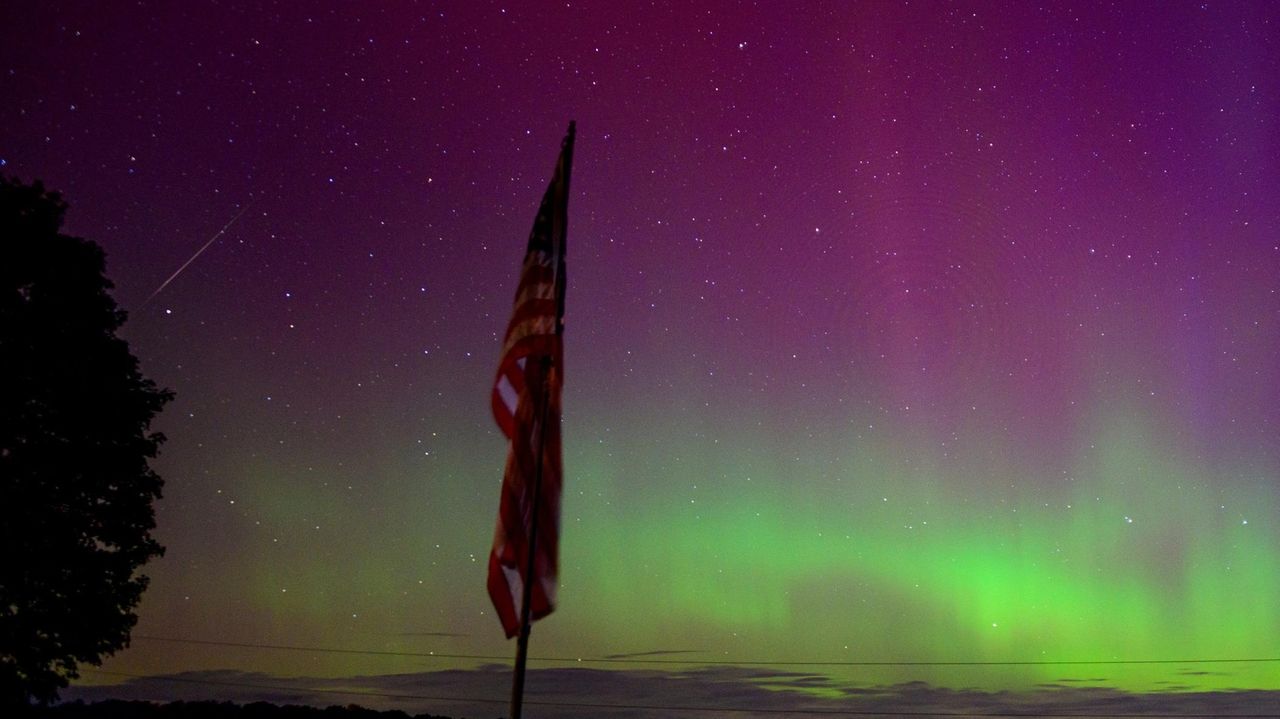Stargazers can witness a range of astronomical marvels this month, including the Perseid meteor shower, Venus and Jupiter sailing alongside one another in the early morning sky, and a triangle of three bright stars high overhead.
The Perseid shower, considered the most impressive of the year, will peak on Aug. 12-13, according to NASA. Meteor showers appear as the Earth circles through the trails left behind by comets and asteroids; when the debris enters the Earth’s atmosphere it bursts into flame, leaving long trails of light and color as the meteors flash across the sky.
Perseid typically features 50 to 100 meteors streaking past every hour, according to NASA. The shower is also notable for its “fireballs”–”larger explosions of light and color that can persist longer than an average meteor streak.”
But viewers should not expect a fireworks display this year, cautioned Ken Spencer, president of the Astronomical Society of Long Island. The peak shower will arrive when the moon will be four days past full, Spencer said. “That’s going to obscure a lot of meteors,” many of which are very faint to begin with.
The astronomy site EarthSky suggests viewers stand with their backs to the moon to catch a glimpse. The best chance to see something is “in the dark hours before dawn,” Marcy Curran, an editor at EarthSky, advised in a video posted to the site.
Also this month, the two brightest planets, Venus and Jupiter, will do something “very spectacular,” EarthSky president Deborah Byrd said in the video. The two bodies are moving closer each day, Venus moving lower in the sky while Jupiter is rising, and will seem to almost touch in the sky on Aug. 12 — the same night as the peak of the Perseid shower.
Insomniacs may have the best chance to get a view: Spencer said a good time to see them is around 4 a.m. “Two bright objects that are that close … To see the two of them glowing so brightly, that’s really a nice thing to see.”
Other scenes in the summer’s astronomical show include the “summer triangle,” as it is known, when the stars Deneb, Vega and Altair are visible high overhead as darkness falls. The triangle is not a constellation — each star belongs to a separate constellation — but it nevertheless forms “the biggest, brightest and most obvious pattern of stars in the August sky,” Curran said in the video.
Spotting the triangle also makes it easier to find the constellations they are part of, Spencer said, though a dark viewing spot is required to make them out.
By the end of August, six planets — Mercury, Venus, Jupiter, Uranus, Neptune and Saturn — will be visible overhead in the mornings before sunrise, though not all at the same time, according to EarthSky. Mercury shows up in the twilight hours, and some of the others come into view once it’s dark. And you need a telescope or strong binoculars to see Uranus and Neptune.
The best spots for viewing all these astronomical sights are secluded public parks and beaches, away from artificial lights and where there’s an open view of the sky.
Darker skies can be found at Robert Moses State Park (though you need a stargazing permit to be there at night) and Montauk Point (though the lighthouse can interfere). Orient Point is one of the best spots on the Island, Spencer said.
Amateur astronomers can look at the night sky through telescopes and learn from volunteers at the Custer Observatory in Southold, which is open to the public Saturday nights from 8 to midnight.

